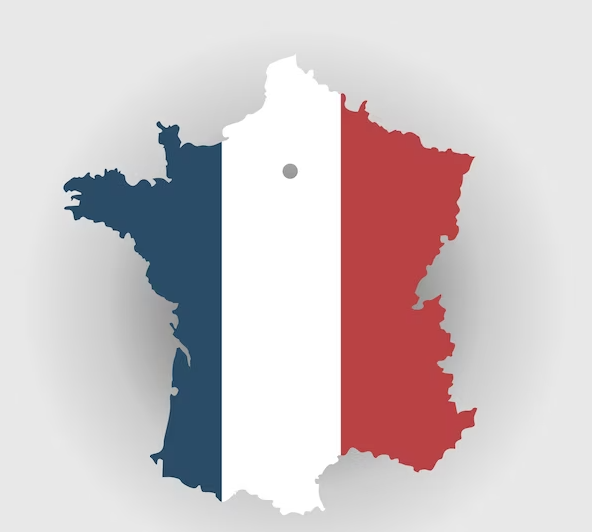France National Color is known for its rich culture, history, and traditions. The French national flag is a symbol of national pride, with its iconic blue, white, and red colors. These colors have a deep historical significance and are considered as the France National Color. In this article, we will delve into the history and significance of the blue, white, and red colors and how they became the France National Color. We will also explore the various ways these colors are used in France's culture, traditions, and daily life.
The History of France National Color
France's national colors date back to the French Revolution of 1789. During this period, France was undergoing a time of political and social turmoil. The monarchy was overthrown, and a new republic was established. As part of this transformation, the national flag was also changed to represent the new republic. The red and blue colors of Paris and the white of the Bourbon dynasty were combined to create the new French flag.
The three colors were chosen for their symbolism. Blue represented the color of Saint Martin's cloak, a symbol of charity. White represented the Bourbon dynasty and the royal coat of arms. Red represented the bloodshed during the revolution and the struggle for liberty and equality.
The Use of France National Color in Culture and Traditions
The blue, white, and red colors are an integral part of France's culture and traditions. They can be seen in various aspects of daily life, including clothing, food, and decorations.
One of the most iconic examples of the use of these colors is the French national soccer team's jersey, which features the blue, white, and red stripes. This jersey is a symbol of national pride and is worn with honor by players and fans alike.
The colors are also used in French cuisine, such as the tricolor macarons, which are blue, white, and red. These macarons are a popular dessert in France, and their colors represent the national flag.
In addition, the colors are used in decorations during national celebrations such as Bastille Day, which is celebrated on July 14th. During this celebration, the streets are filled with blue, white, and red flags and decorations.
The Significance of France National Color Today
France's national colors remain a significant symbol of the country's identity and pride. The colors are used in official ceremonies, such as the national anthem and state funerals. Moreover, the blue, white, and red colors are a reminder of France's rich history and the struggles of its people to achieve liberty, equality, and fraternity. These values are still upheld today and are a source of inspiration for many.
Conclusion
In conclusion, the national colors of France - blue, white, and red - have a rich history and symbolism that reflect the country's values and identity. From the revolutionary origins of the tricolor flag to its use in modern-day celebrations, these colors have become an iconic representation of France around the world. The blue represents liberty and perseverance, the white represents equality and purity, and the red represents fraternity and bravery. Whether you're a French citizen or a visitor to the country, understanding the meaning behind these colors can deepen your appreciation for French culture and history. So, the next time you see the blue, white, and red waving in the wind, take a moment to reflect on the significance of these colors and what they mean to the people of France
FAQs
- Why are blue, white, and red the national colors of France?
The colors were chosen during the French Revolution of 1789 and represent various symbols, including charity, royalty, and the struggle for liberty and equality.
- What are some examples of how the national colors are used in French culture?
The national colors are used in various aspects of daily life, including clothing, food, and decorations. One of the most iconic examples is the French national soccer team's jersey, which features the blue, white, and red stripes.
- How do the national colors represent France's identity?
The colors are a symbol of national pride and are used in official ceremonies, such as the national anthem and state funerals. They also represent France's rich history and the values of liberty, equality, and fraternity.
- Are there any specific rules or regulations for using the national colors of France?
There are no specific rules or regulations for using the national colors of France. However, it is important to use them with respect and honor as they
References
- "France's National Flag: Tricolour Symbolism" by Oliver Gee, The Local France
- "The French Revolution: The Beginning of the Republic" by Alain Plessis, France in the United States
- "The Meaning Behind the Colours of the French Flag" by Alina Petre, World Atlas
- "Why Do We Celebrate Bastille Day?" by Sarah Pruitt, History
- "The Colors of France: Blue, White and Red" by Laura Nubuck, The Culture Trip.
